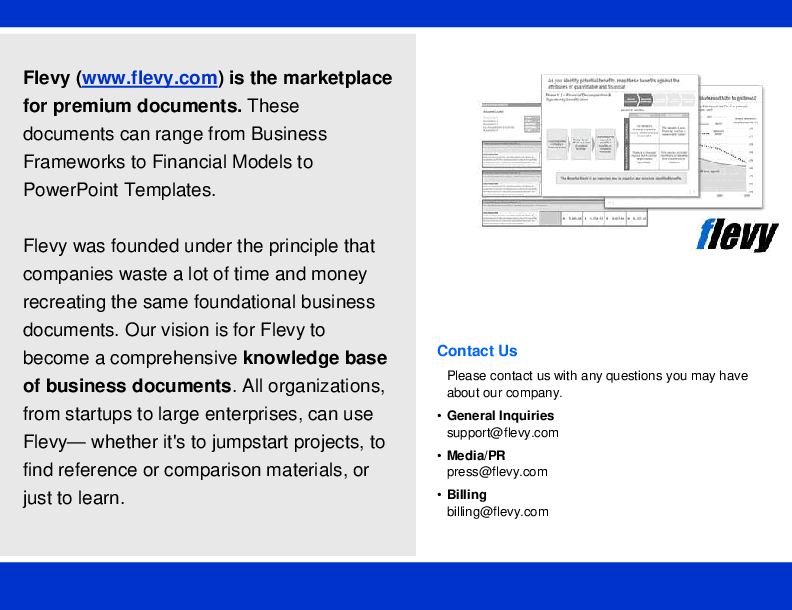Service Level Agreement (SLA) - Expanded Definition (Word DOCX)
Word (DOCX) 10 Pages
DESCRIPTION
If you want to better manage your customers' expectations, a service level agreement (SLA) may be worth considering. An SLA is a negotiated agreement designed to create a common understanding about services, priorities and responsibilities.
Although an SLA is an excellent expectations-managing mechanism, it's important to manage your own expectations of what it can realistically accomplish. Unfortunately, some people view an SLA as a complaint-stifling mechanism or a quick fix to a troubled relationship; however, using it for such purposes creates more problems than it solves. Instead, think of an SLA as:
1. A communications tool. The value of an agreement is not just in the final product; the very process of establishing an SLA helps to open up communications.
2. A conflict-prevention tool. An agreement helps to avoid or alleviate disputes by providing a shared understanding of needs and priorities. And if conflicts do occur, they tend to be resolved more readily and with less gnashing of teeth.
3. A living document. This is one of its most important benefits. The agreement isn't a dead-end document consigned to the Forget Forever file. On a predetermined frequency, the parties to the SLA review the agreement to assess service adequacy and negotiate adjustments.
4. An objective basis for gauging service effectiveness. An SLA ensures that both parties use the same criteria to evaluate service quality.
This article is primarily aimed at customers and provides some best practices and simple tips for drafting effective SLAs.
Understanding the intricacies of service level agreements is crucial for any organization aiming to enhance service delivery. This Word document delves deeper into the elements that make up a robust SLA, offering insights that go beyond basic definitions. It outlines key performance indicators, response times, and escalation procedures, ensuring that both parties have a clear roadmap for service expectations. By leveraging this comprehensive guide, executives can foster stronger partnerships and drive accountability, ultimately leading to improved operational efficiency and customer satisfaction.
Got a question about the product? Email us at support@flevy.com or ask the author directly by using the "Ask the Author a Question" form. If you cannot view the preview above this document description, go here to view the large preview instead.
Source: Best Practices in SLM, Service Level Management, Service Management Word: Service Level Agreement (SLA) - Expanded Definition Word (DOCX) Document, Charles M. Intrieri Consulting





